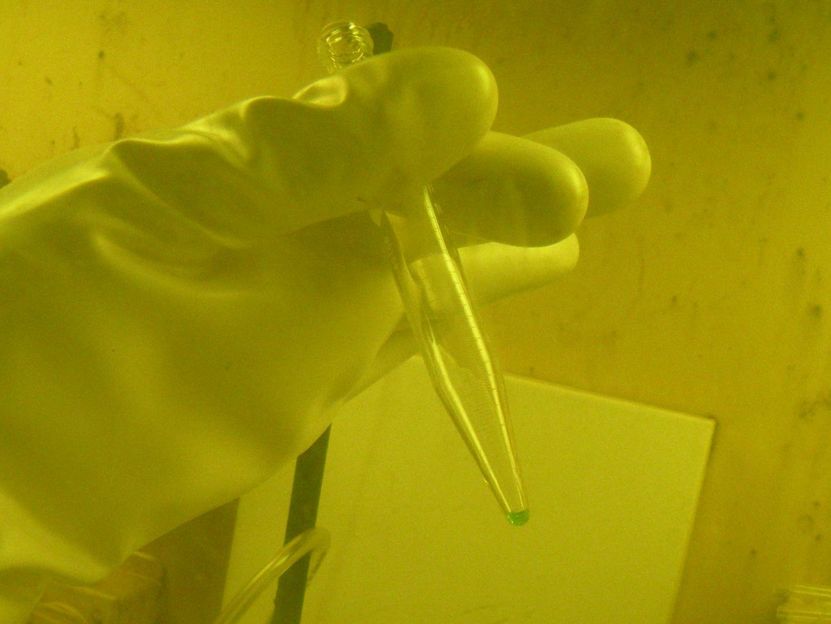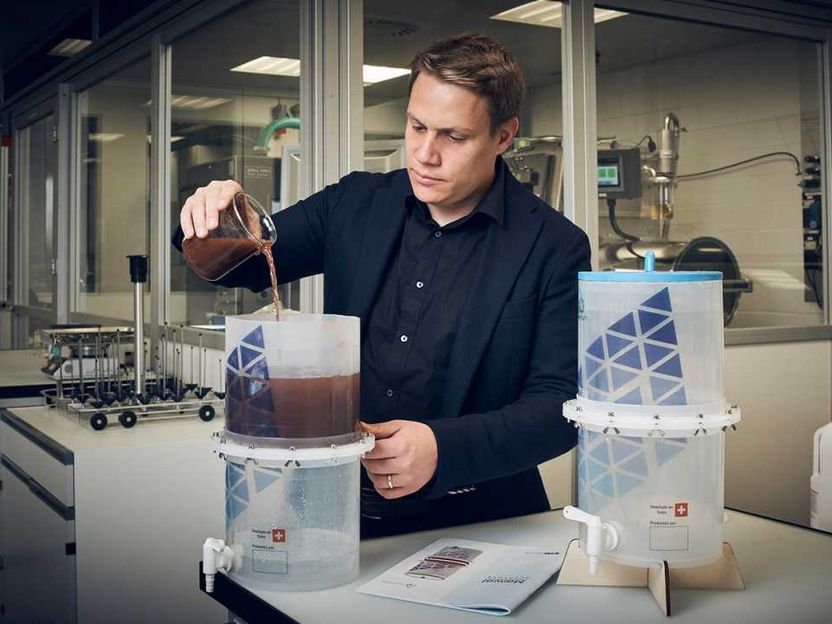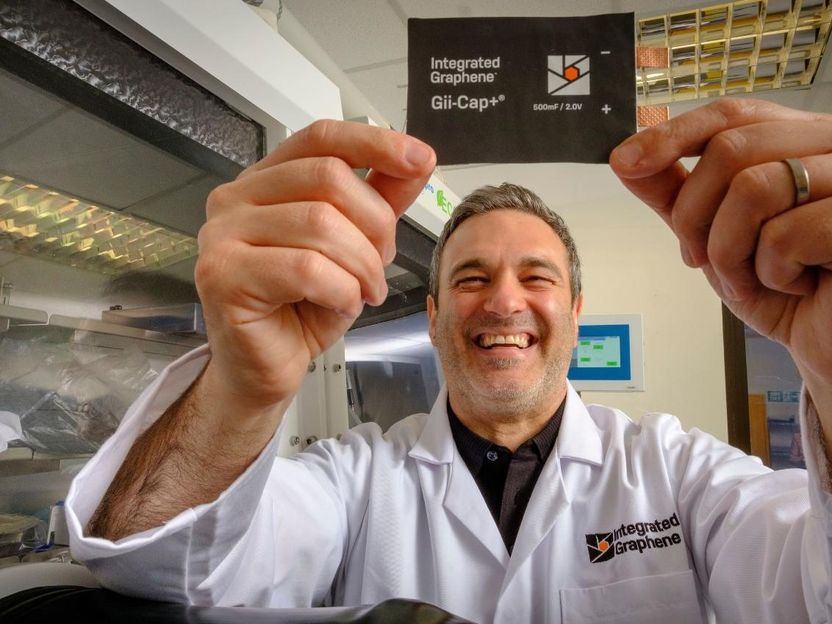Provisional names announced for superheavy elements 113, 115, 117, and 118
The International Union of Pure and Applied Chemistry (IUPAC) Inorganic Chemistry Division has published a Provisional Recommendation for the names and symbols of the recently discovered superheavy elements 113, 115, 117, and 118.

Berkelium-249, contained in the greenish fluid in the tip of the vial, was crucial to the experiment that discovered element 117. It was made in the research reactor at DOE's Oak Ridge National Laboratory.
ORNL
The provisional names for 115, 117 and 118 -- originally proposed by the discovering team from the Joint Institute for Nuclear Research, Dubna, Russia; the Department of Energy's Oak Ridge National Laboratory, Oak Ridge, Tennessee, and Lawrence Livermore National Laboratory, Livermore, California; and Vanderbilt University, Nashville, Tennessee -- will now undergo a statutory period for public review before the names and symbols can be finally approved by the IUPAC Council.
Tennessine (Ts) is proposed for element 117, recognizing the contribution of Tennessee research centers ORNL, Vanderbilt, and the University of Tennessee to superheavy element research, including the production and chemical separation of unique actinide target materials at ORNL's High Flux Isotope Reactor and Radiochemical Engineering Development Center. Actinide materials from ORNL have contributed to the discovery and/or confirmation of nine superheavy elements.
"These experiments and discoveries essentially open new frontiers of chemistry," said ORNL's Science and Technology Partnerships director Jim Roberto.
Prof. Yuri Oganessian from the Joint Institute for Nuclear Research and scientific leader of the team, noted the importance of international collaboration in discovering new elements and nuclei, completing the seventh row of the periodic table, and providing evidence for the long sought "island of stability" for superheavy elements. Two members of the team, JINR and LLNL, were previously credited with the discovery of elements 114 (flerovium) and 116 (livermorium).
These new elements were discovered using the "hot fusion" approach, developed and implemented by Oganessian at JINR. This approach involves heavy ion reactions of an intense, high-energy calcium beam on rare actinide targets including berkelium and californium at the Dubna Gas-Filled Recoil Separator.
The concept of the "island of stability" was originally proposed in the 1960s. It predicts increased stability for superheavy nuclei at higher neutron and proton numbers. The new nuclei produced in this research exhibit substantially increased lifetimes consistent with approaching the island.
Moscovium (Mc) is provisionally recommended for element 115 in recognition of the Moscow region and honoring the ancient Russian land that is home to JINR. Moscow is the capital of the region, and Moscow and its people have been very supportive of JINR and superheavy element research.
The provisional name for element 118 is Oganesson (Og) in recognition of the pioneering contributions of Yuri Oganessian to superheavy element research. It was the vision and determination of Prof. Oganessian that created this opportunity for the significant expansion of the periodic table and our knowledge of superheavy nuclei.
IUPAC also has published a Provisional Recommendation for element 113. The discoverers at RIKEN Nishina Center for Accelerator-Based Science in Japan proposed the name nihonium (Nh). Nihon is one of the two ways to say "Japan" in Japanese, and translates as "the Land of Rising Sun."
Other news from the department science

Get the chemical industry in your inbox
By submitting this form you agree that LUMITOS AG will send you the newsletter(s) selected above by email. Your data will not be passed on to third parties. Your data will be stored and processed in accordance with our data protection regulations. LUMITOS may contact you by email for the purpose of advertising or market and opinion surveys. You can revoke your consent at any time without giving reasons to LUMITOS AG, Ernst-Augustin-Str. 2, 12489 Berlin, Germany or by e-mail at revoke@lumitos.com with effect for the future. In addition, each email contains a link to unsubscribe from the corresponding newsletter.
Most read news
More news from our other portals
Last viewed contents
Frost & Sullivan: Which are the emerging growth markets for nondestructive test inspection services? - Brazil and South Africa lead the way, while India and China offer long-term growth opportunities
John_Battiscombe_Gunn

Sustainable clean drinking water solution - Olivier Gröninger is improving the drinking water supply for people in rural areas of South America with his Openversum project

Origin.Bio secures $15 million funding to help manufacturers create a more sustainable future - Start-up connects bioengineers with nature to hack entirely new organisms, freeing manufacturers from petrochemical dependency
LZH Spin-off "Particular GmbH" Starts Up

Printed electronics to monitor industrial production processes - Startup from Merck Innovation Lab in Israel Markets First Predictive Maintenance Sensors

Integrated Graphene to invest £8M in scaling-up world’s first market-ready graphene - Integrated Graphene has developed a unique process to produce a pure 3D Graphene Foam onto a range of substances at ambient room temperature

Battery Production at Record Speed





























































